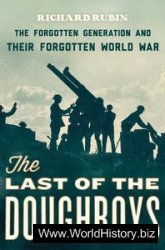The participation of a Eurasian power, Soviet Russia, gave the
Weir a new dimension. The American-Japanese war made it a
world war. After the fall of France, the Vichy government was
forced to give the Japanese free access to Indochina. This enabled
Japan to isolate China by blocking the road and the railway
to Yunnan. The German invasion of Soviet Russia had surprised
the Japanese command, but the Japanese declined a
German invitation to invade Siberia. Instead they meticulously
prepared a campaign to conquer South East Asia. They could
not realize the plan without first preventing a counter-attack by
the American fleet. On 7 December 1941 a daring air raid caught
the American fleet riding at anchor several thousand miles away
in Pearl Harbour. It was completely successful. The American
fleet, except for three aircraft carriers, was disabled for months
afterwards. Two days later, Japanese planes sank two powerful
battle ships of the Royal Navy. The Asian seas became the private
domain of the Japanese air and sea forces, and were to remain so
for some time.
The United States had been caught by trickery. The previous
controversy about American participation in the war was silenced
and she entered the war with unhesitating resolution. Her
industrial potential was immense, buta functioning war industry
and a powerful army had still to be organized. The air force had
scarcely been established and half the fighting fleet had been
sunk.
The Japanese campaign was quick and thorough. In a few
months, Hong Kong, the Philippines, the atolls in the central
Pacific, the Dutch East Indies, Malaya and Singapore fell to
Japan one after another. A peaceful entry7 into Siam was followed
by the capture of Burma, the invaders winning the confidence of
local nationalists by endorsing their agitation against European
colonialism. India and Australia were threatened and troops
had to be recalled from the Middle East to defend them.
The Pacific theatre of war covered an area incomparably
greater than that of western Europe. Tokyo is over 4,000 miles
from Hawaii, and Midway Island is 6,000 from Burma. The
Japanese had to feed their troops and protect their convoys from
American submarines, while consolidating their vast new empire
and making it productive before the Americans could take the
offensive. The Americans might then be discouraged from fighting
back. It was not yet clear whether their naval forces, their
air force, their merchant marine and their economy would be
able to rise to the occasion.
Japanese and German victories placed their enemies in a precarious
position between June 1941 and the spring of 1942.
America, being new to submarine warfare, lost a catastrophic
tonnage of shipping to the Germans in the Atlantic. It seemed
that Germany, Italy and Japan might succeed in carving up the
world as they had planned in September 1940 in their Tripartite
Pact.
|
|
||||||||
|
Www.WorldHistory.Biz
Sundries
 Contact Contact
|
 
11-08-2015, 18:49
The Japanese Attack on Pearl Harbour and the Japanese Victories
  |
|||||||
 |
 |
 |
 |
|||||
|
||||||||

 World History
World History





